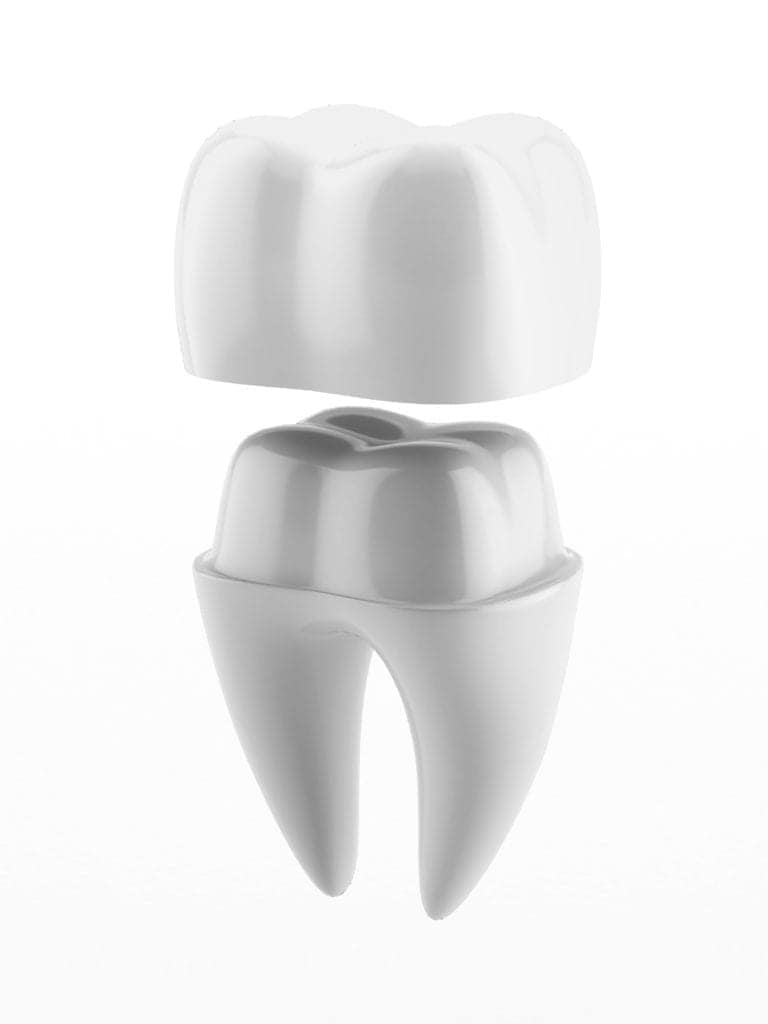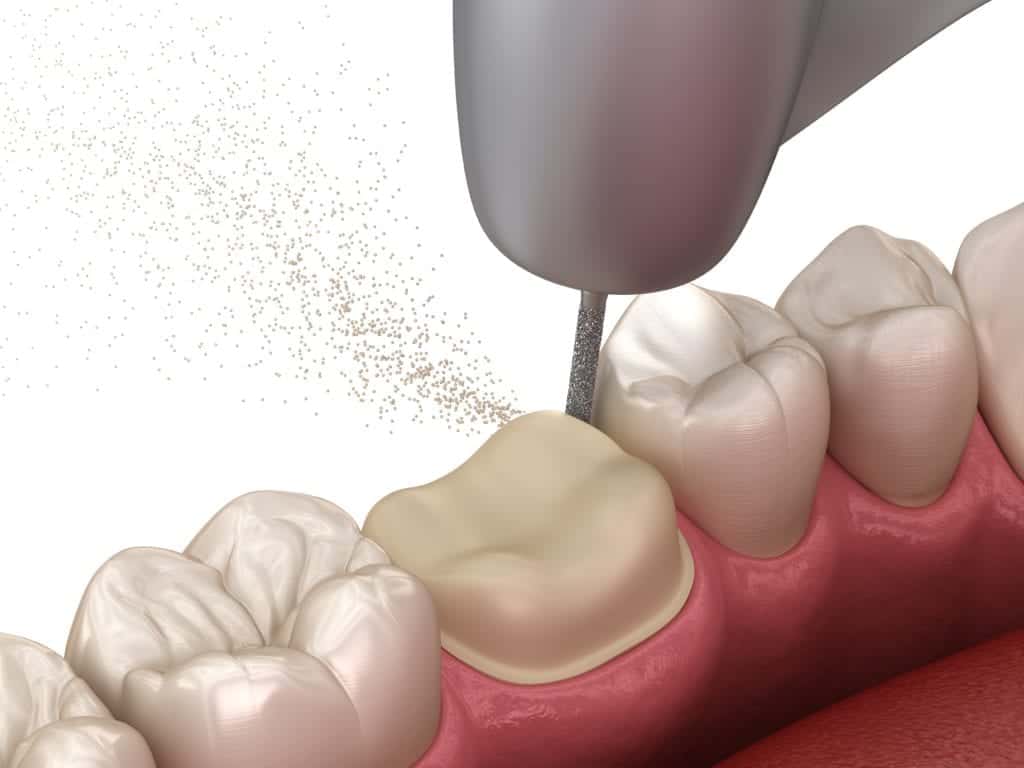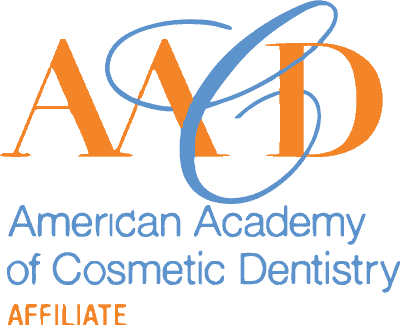If you have suddenly found yourself with a severely broken tooth or an extreme toothache, you may be wondering what is going to happen to your tooth. Luckily, dentists are primarily concerned with the preservation of your natural teeth, even if they are broken or decayed. However, your dentist will need to treat the damaged or decayed part of your tooth in order to restore the tooth. In cases of severe damage or decay, dental crowns are the dental prosthetic commonly used for restoration.

The simple definition of a dental crown is a tooth-shaped cap that fits over the top of the tooth. It is known as a dental crown because it completely covers the crown, or visible portion of the tooth. Once placed, crowns can protect the tooth from becoming damaged, as well as seal out the bacteria responsible for tooth decay.
Although damage and decay are the two most popular reasons to have a dental crown placed, there are some other reasons why your dentist may suggest a crown. In some cases, crowns can be used to treat an uneven bite by placing one or more crowns that are shaped to create a more even bite. They can also be used for cosmetic reasons. Cosmetic dental crowns can improve the color, shape, size, and spacing of teeth to yield an aesthetically-pleasing smile.
In addition to addressing multiple concerns, dental crowns can also be fabricated from a variety of dental materials. Often times, the dental material used is based on the issue that the dental crown is being placed to resolve. For example, a metal crown may be used to treat an uneven bite in a teeth grinder, while a porcelain crown may be used to improve the look of an oddly shaped tooth. Ultimately, your dentist will need to advise you on the type of dental material that will work best for your individual situation.
When having a dental crown placed, however, it is common to have a temporary stainless steel crown placed until the permanent crown has been fabricated. This is because the tooth must be prepared for the permanent crown before the impression or oral scan used for fabrication can be taken.

To place a dental crown, any decayed tissue will need to be removed. Depending on the extent of the decay, a root canal may need to be performed. The tooth will then be reduced in size so that a crown can fit on top without affecting the bite. In cases where the tooth is broken, the remaining tooth structure will need to be shaped and possibly built up to accomodate a dental crown. For more information, see “How Much Tooth is Needed for a Crown?”
After the tooth is prepared, a dental impression or oral scan is taken. The information obtained by the impression or scan is what the dental lab will use to fabricate the permanent crown so that it fits seamlessly over the existing tooth structure. In the meantime, the tooth is covered with a temporary crown to protect it and prevent tooth sensitivity.
Now that you know what a dental crown is, what they can be used for, some of the materials used to make dental crowns, and the placement process, you have a better understanding of what to expect if you have a tooth that is severely damaged or decayed. Most importantly, you also know that even if your tooth is damaged or decayed, this doesn’t necessarily mean you’re going to lose that tooth. After all, dentists are primarily concerned with keeping your smile both in and out of the dentist’s chair.

Dr. Dennis Laurich has been practicing dentistry for over 40 years. He received his DDS degree from the University of Michigan Dental School and regularly attends oral health care conventions to continue his dental education. This allows him to treat patients with the leading dental technology and methodologies. Additionally, he is a member of the American Dental Association, Michigan Dental Association, and the Detroit District Dental Society.
Dr. Dale Flanagin II is a distinguished professional in the field of dentistry, holding a Bachelor’s degree in Molecular Biology and Biotechnology as well as a Doctor of Dental Surgery degree. He is committed to improving the lives of others through his work, driven by a lifelong passion for helping people.





